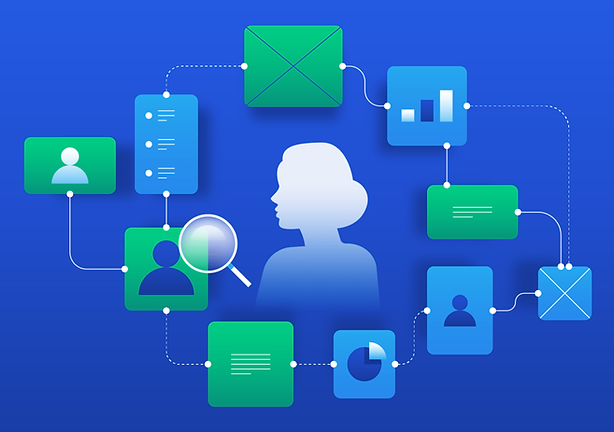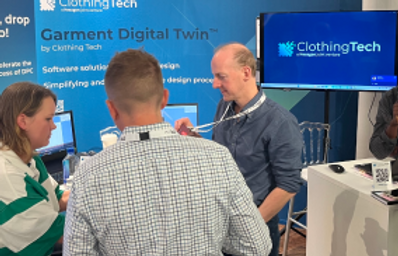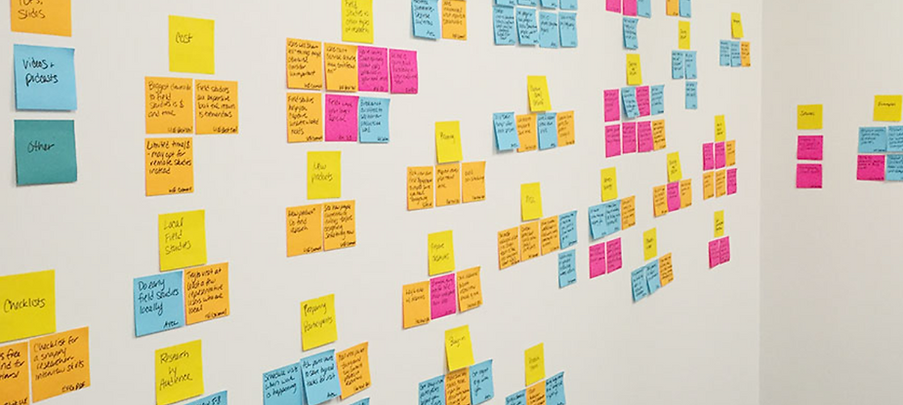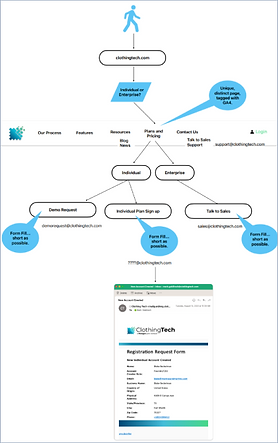
Fashionr™ by Clothing Tech - Digital 3-D Clothing Creator for fashion designers.
Created for apparel brands, Fashionr™ by Clothing Tech is an innovative SAAS application design software for fashion designers that simplifies processes by using AI tools, component libraries, and automated features that reduce cost, time, and design decisions all in one solution.
Role: Senior UX/UI Designer
Duration: 2 years
Methods: Scrum, Agile, and Design Collaboration
Deliverables:
-
Persona discovery
-
User interviews
-
Comparative/ competitive analysis
-
Feature updates and creation
-
Digital marketing
-
Icon Design
-
User Journey Mapping
-
Updating Payment structure
-
Improving the end-to-end user journey
Tools:
-
Figma, Adobe Creative Suite, Unity, Google Teams, Pen and Paper, Miro, Google products, User Interviews, Competitive Analysis, Salesforce, Java, Fig Jam, Pen and Paper


We Didn't Know how to connect to our target users
When I joined Clothing Tech, the company faced a significant challenge: we didn't know our users. Without understanding who our target audience was, we couldn't effectively address their pain points or design solutions that met their needs.
My mission was to bridge this gap through empathy and connection, using a variety of research methodologies to gain deep insights into our potential users.
-
Attending Tradeshows:
-
I attended numerous tradeshows, gathering face-to-face insights from potential clients.
-
One boutique owner highlighted the frustration of integrating new tech into existing inventory systems, a common industry pain point.
-
-
Regular Updates from Product Manager Team Insights:
-
Regular conversations with our product manager team revealed that many users struggled with our mobile app’s navigation, an issue previously overlooked.
-
-
Conducted User Interviews:
-
Direct interviews with clients provided deep insights.
-
For example, Sarah, a fashion entrepreneur, was frustrated with the time-consuming process of updating her product catalog, underscoring the need for a more streamlined interface.
-
-
Established Usability Testing Inquiries:
-
Conducting usability tests allowed me to gather real-time feedback and observe user interactions.
-
This helped identify critical usability issues that needed immediate attention.
-



How we compared in the market
My sales team and I developed a brand media update to communicate with potential clients. We utilized Constant Contact to distribute weekly email campaigns to promote onboarding. However, we faced some challenges due to pain points experienced by users.
My sales team and I developed a brand media update to communicate with potential clients. We utilized Constant Contact to distribute weekly email campaigns to promote onboarding. However, we faced some challenges due to pain points experienced by users.

Data and trends collected
From my research, several key trends and pain points emerged:
User Pain points on current systems:
-
Resistance to Change:
-
Users were hesitant to switch systems due to significant investments of time and money in their current setups.
-
-
Onboarding Challenges:
-
The onboarding process for new applications was often too lengthy, deterring potential users.
-
-
Unmet Promises:
-
Current applications frequently failed to deliver on promised features like tech packs, pricing tools, sizing options, and rapid prototyping in 3D.
-

Post-It note diagrams to figure out the core customers and how they think.
Who is our target audience?
Based on my research and competitive analysis, we identified three distinct personas to guide our product development:
-
Director of Technical Design and 3D Design:
-
Struggles with integrating new technology with existing systems.
-
-
Head of Global Innovation and Design Team:
-
Needs a streamlined process for innovating company growth and future projections.
-
-
Designer, Hobbyist, Freelancer, Self-Employed:
-
Seeks easy, comprehensive tools that enhance productivity without lengthy onboarding.
-
Scroll through to discover each person's challenges.
Underlying issue
Fashion designers face significant challenges in their workflow due to software solutions that are cumbersome to onboard and lack seamless integration. These inefficiencies lead to a frustrating and time-consuming experience, hindering productivity.

Solution oriented
-
How might we create software solutions that seamlessly integrate into fashion designers' workflows, providing a one-solution experience?
-
How might we develop an intuitive user interface for fashion design software that reduces the onboarding process and enhances efficiency?
-
How might we design a comprehensive tool that meets all the needs of fashion designers, increasing their productivity and satisfaction?

Guiding the user
The sales team and I spoke in length about what these types of clients would expect when making a decision to WHY CHOOSE to use this product.
Points included:
-
Branded email messaging, trigger points, and follow-up.
-
Marketing campaigns.
-
Clothing Tech Homepage and User Dashboard.
-
Updating the payment structure.
All of these factors were taken into consideration to attract the users we were targeting.

Driving user-centered results through collaboration with focus on the end-to-end user experience.
The research proved to be small yet mighty success.
Impact:
-
🚀 Delivered design enhancements that contributed to acquiring 6 new beta clients from Fortune 500 fashion companies.
-
📈 Boosted user interactions from 40 to 1500 weekly, increasing engagement and web traffic.
-
🎯 Led a digital marketing campaign that generated 300 unique leads in 6 months.
We had some issues
While focusing on user-centric design and addressing the core challenges faced by fashion designers had a positive impact, we still encountered significant hurdles.
Clients were hesitant to onboard and try out our system, deeply invested in their current solutions.
Additionally, we faced coding and onboarding issues that complicated the transition for new users. These challenges underscore the importance of continuous improvement and adaptation to better meet our users' evolving needs.

Clothing Tech Team
Owner
CMO and Sales (2 People)
UX team (7 people)
Developers and System Software Team (8-10 people)
Client Service Team (3 People)
External Marketing Team
External Business and Content Team
Users and Onboarded Clients
External Links
Click here to visit The Clothing Tech Website and the Clothing Tech Marketing Video.

